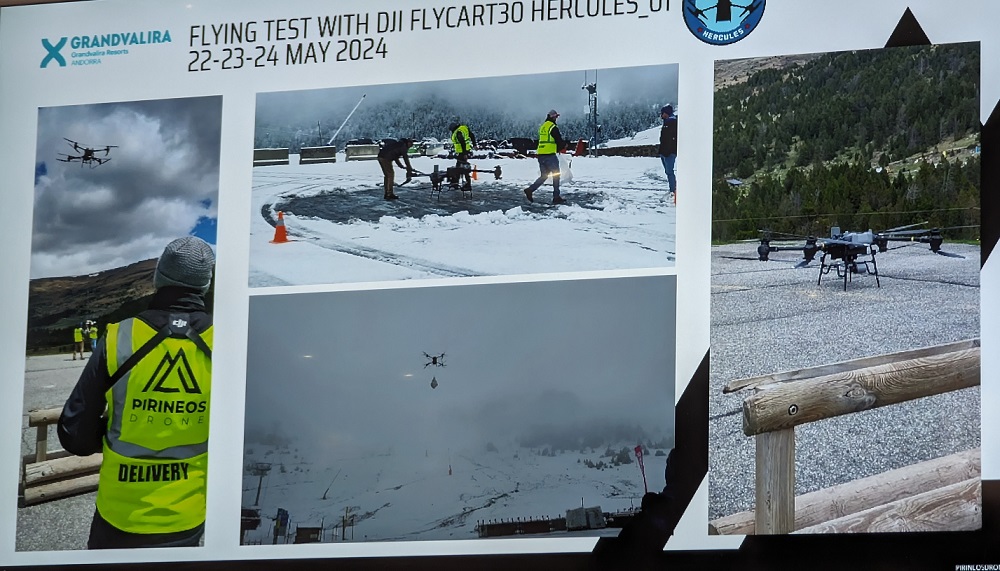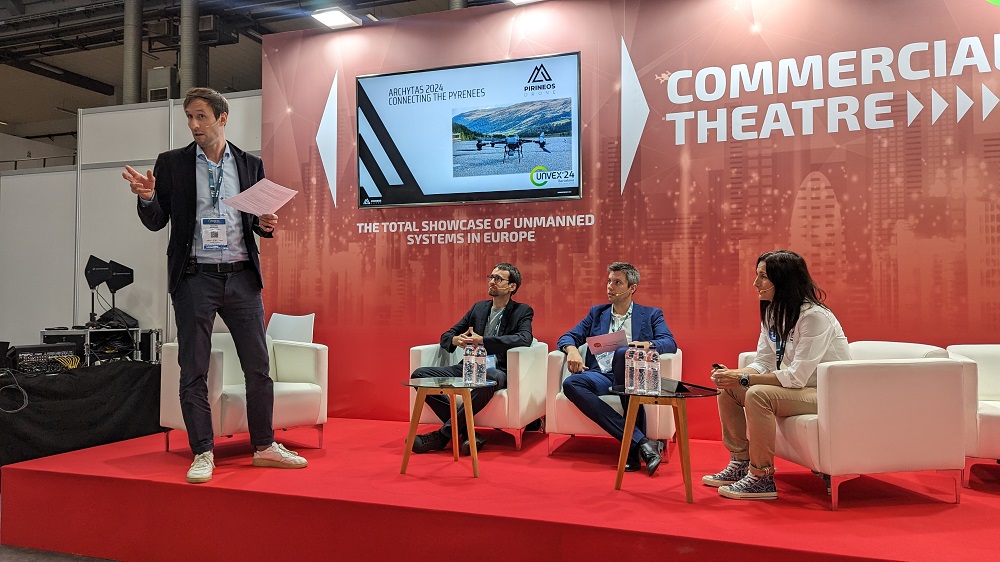Moderated by Drone Industry Insight Co-founder Hendrik Bodecker, the Drone Delivery panel at UNVEX pulled together individuals that are working to enable drone delivery across Spain, highlighting the technology and types of delivery that will define the future of the space. They also detailed the challenges that need to be sorted out in the short and long term.
Lara Iglesia, CEO of Pirineos Drone, was first to present. Her company is located in the heart of the Pyrenees, which is part of the reason they’re working on the ARCHYTAS project, which is designed to enable operations like delivery in difficult rural environments, which defines the Pyrenees. She detailed milestones in the development of mountain drone logistics and Mountain Air Mobility (MAM), which she sees as a subset of Regional Air Mobility (RAM).
“We live and suffer the mountains,” Iglesia told the crowd. “There aren’t as many resources in these rural environments, which is why we’re focused on these types of deliveries and believe they’ll happen here before you see regular deliveries in urban environments.”
She also showed a few pictures from a recent flying test with the DJI Flycart30. Next up for the company are planned autonomous test flights that will further utilize the Flycart30 as well as heavier payloads.

Enrique Sánchez Hernández is the Development and Projects Director of CITET, which stands for the Innovation Center for Logistics and Transportation of Goods. The organization provides technological and human tools necessary to guarantee sustained and sustainable development in the logistics and freight transport sector. Their objectives include providing completely automated transport that is aimed at delivery and distribution.
Recent drone tests conducted by the organization have proven the value of these operations in terms of cost, time and environmental sustainability, but seeing who was providing those results was key.
“We were testing with the actual users,” Hernández said. “That’s important for us because we want these operations to be useful for the sector.”
Finally, Jordi Salvador Bernadí, the CEO of the BCN Drone Center, presented to highlight the creation of their advanced navigation solution for UAS delivery. The BCN Drone Center is a UAS test site with the necessary setup and facilities to advance drone technology. Bernadí focused on the organization’s work deploying BVLOS delivery routes for various clients in Spain but also discussed how their efforts in the egeniouss project are enhancing UAS safety standards.
The egeniouss project provides a real-time visual localisation framework for satellite-based navigation. He called out the technical challenge with this kind of solution, because it needs to function in situations where GNSS is not performing as intended. That can be in urban canyons, jamming and spoofing, or an operation that is too dependent on GNSS. With a long view in mind, the organization is working on making navigation accurate and trustworthy for everyone.
“After we define the solution, it’s set to become a cloud service that our member uses can connect into like an app that is linked to the autopilot,” Bernadí said in response to a question about the eventual future of this ecosystem. “It could be an add-on to any system for drone operators.”
Bodecker then led the panel in a discussion that touched on various topics, including what to expect next with each of their organizations, whether or not jobs will need to evolve, the next milestone for deliver in the drone industry and much more.















Comments